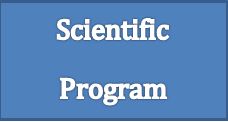Maria Pia Fuggetta
Istituti Fisioterapici Ospitalieri, Italy
Title: Polydatin displays antitumour activity against murine melanoma in vitro and in vivo
Biography
Biography: Maria Pia Fuggetta
Abstract
Stilbene compounds are a family of phytoalexins, synthesized by different plants where they are induced by stress conditions such as infection, trauma and UV-irradiation. Among stilbenes, Resveratrol, (3,5,4´-trihydroxystilbene RES), and its glucoside Polydatin (3,5,4'-trihydroxystilbene 3-O-beta-D-glucopyranosid POLY), have increasingly gained scientific interest. POLY is structurally related to RES in which the oxidrilic residue is substituted by a glycoside group. This substitution induces changes in the biological properties. RES is susceptible to oxidative degradation while POLY, a precursor of RES is more resistant to enzymatic oxidation, POLY is highly soluble in water, enter the cells by active transport and is more readily absorbed by the intestine. RES and POLY, show many antitumor properties including apoptosis induction and inhibitory effects on cancer cell proliferation, angiogenesis, metastasis, and inflammation. In addition, they can modulate immune system response and protect normal cells against free radicals damage. Melanoma is the most common cutaneous malignancy in Caucasian population whose frequency is increasing at an alarming rate. In previous studies, we have demonstrated that RES inhibits the proliferation of human melanoma, also resistant to Temozolomide, and we have suggested that the mechanism by which RES exerts its antitumor activity in melanoma cells correlates with apoptosis induction, reduction of telomerase activity and hTERT gene transcript levels. Objective of the present study is to investigate the antitumour activity of POLY in vitro and in vivo on a murine syngenic model of melanoma. We tested in vitro the antiproliferative effects of POLY on tumour growth and compared its effectiveness with the activity of RES on B16 melanoma cell line. In addition,
cell cycle progression, induction of apoptosis and telomerase inhibition were also investigated. We found that POLY, like RES, can inhibit cancer cell proliferation in B16 melanoma in a time- and concentration-dependent fashion, and that the POLY at lower concentrations resulted to be more effective than RES. In vivo experiments were performed in a syngenic murine model in which male C57BL/6J were injected with B16 melanoma cells with different treatment schedules to assess the chemopreventive and/or therapeutic activity of POLY. The results show a significant reduction of tumor mass, measured during POLY treatments and a significant survival increase in mice treated with POLY pre and post-tumor implantation. Though preliminary these results suggest that POLY, for its clinical potential, both in terms of disease prevention and treatment, could be considered a good candidate in melanoma management.

